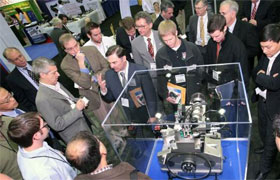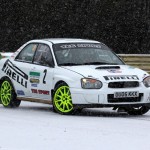Scuderi Group, an engine development company that is re-engineering the conventional four-stroke engine to advance fuel-efficient engine design, today announced it filed new patents to develop the second generation Scuderi™ split-cycle engine. Achieving an industry-first, Scuderi has applied a V design to the split-cycle engine to improve thermodynamic efficiencies for turbo charging and to provide automotive engineers more design flexibility. Simulation tests on the Scuderi V engine will begin January 2011, supporting other key programs underway including the engine map and on-the-road vehicle simulations.
This brings the current Scuderi Group Patent Portfolio to include more than 476 patent applications filed and 154 issued in 50 countries. To listen to an audio podcast of Scuderi Group Vice President and Patent Attorney Stephen Scuderi discussing the patent in more detail, go online to: http://www.scuderiEngine.com/v-engine-design-patent.
“This new engine design enables us to demonstrate the real benefits of having a Scuderi Engine in a vehicle – an engine that can achieve better power, lower emissions and higher fuel-efficiency, all at a competitive cost to produce gasoline-powered vehicles today,” said Scuderi. “The V-shape expands the design possibilities for our engine. We continue to share updates with the OEMs and are confident as additional data is released, the advantages of the Scuderi engine will be fully realized.”
The patents support technology advancements in the following areas: engine cylinder configuration, modular crossover passages, crossover passage manifolds and associated air reservoir valve assemblies, and thermal regulations systems. Designing the cylinders in a V-shape allows for air intake to flow more naturally, which improves volumetric pressures. There are additional benefits achieved by enhancing thermal controls in the crossover passages (Xovr), such as the ability to over boost and maintain consistent thermal efficiencies.
Due to the inherent design flexibility of a Scuderi split-cycle engine configured in a V-shape, the engine can be more easily modified as a Scuderi Air-Hybrid. In this configuration, recovered braking energy is stored as compressed air to support a range of driving modes and optimize vehicle efficiency. With no exotic parts and minimal retooling, the Scuderi internal combustion engine costs roughly fifty percent less to manufacture than today’s engines.
Scuderi’s spilt-cycle Air-Hybrid V engine is a cost-effective hybrid solution that does not compromise performance and can extend the driving range of hybrid electric vehicles (HEV), which has been a main issue for rapid adoption. According to a recent J.D. Power & Associates report, sales of HEV and battery electric vehicles (BEV) are expected to be tepid. Sales in 2010 are forecasted to total 954,500 vehicles (2.2 percent of the total global passenger vehicle market), with only 5.1 percent growth expected by 2010. Findings were based on consumer surveys that pointed to concerns around key issues such as limited driving range and long recharging times. This study underscores the opportunity for advanced internal combustion engines to improve vehicle efficiency across a variety of applications in the near-term.
Initial tests on the Scuderi V engine are expected to be completed within a year, following the engine map which is anticipated to be finalized in the second quarter of 2011. Scuderi Group also recently expanded its simulation program beyond the Chevy Cavalier, purchasing a brand new 2011 compact car produced in Japan. The vehicle will be tested for two months running a Scuderi engine to prove its performance under real-world driving conditions. The new simulation project will augment the Air-Hybrid study that is being conducted on a 2005 Chevy Cavalier. Results will be presented during the SAE World Congress (April 12-14, 2011) along with two technical papers: 1)”Scuderi Split Cycle Research Engine: Overview, Architecture and Operation” and 2) “Scuderi Split Cycle Fast Acting Valvetrain: Architecture and Development”.





Speak Your Mind